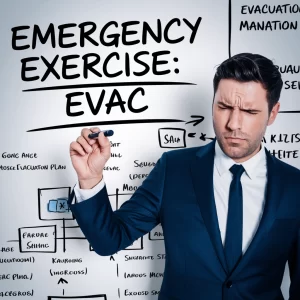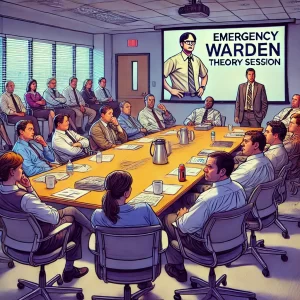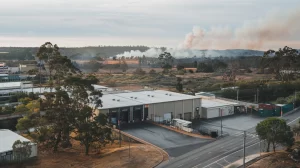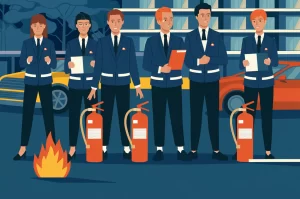Many employees feel unprepared for emergencies at work.
But the good news is, regular emergency drills can change that—by preparing your team to act fast when it counts.
Whether it’s a fire, earthquake, or medical emergency, having a well-rehearsed plan ensures your office knows what to do. In this guide, I’ll walk you through every step of planning, conducting, and reviewing an emergency drill for your office. By the end, you’ll have the tools to make sure your team stays safe and confident in any situation. Let’s dive in!Understanding the Purpose of Emergency Drills in the Workplace
Emergency drills aren’t just a tick-box exercise—they’re essential for keeping your team safe and prepared. When an actual emergency hits, panic often leads to poor decisions. Drills help your staff practice procedures so they can react calmly and follow the right steps, even under pressure. It’s like muscle memory—you don’t need to think, you just do.
There are all kinds of emergencies that might strike: fires, natural disasters, medical crises, or even security threats. Each type of emergency requires a different response, so it’s important to run various drills over the year.
And let’s not forget about compliance. Many governments and local councils require workplaces to hold regular emergency drills. These laws ensure companies prioritise safety, and they often spell out specific guidelines about how often drills should be held and who should participate. If you’re in charge, make sure you know the local rules so your office stays compliant!
Step 1: Planning Your Emergency Drill
Planning is everything when it comes to emergency drills. First off, you need to decide what kind of drill you’re running. Is it a fire drill? An earthquake drill? Maybe a medical emergency? Each type of emergency has its own unique needs, so be clear about what you’re preparing for.
Next, figure out how big you want this drill to be. Are you going to evacuate the entire building, or will it be specific to certain departments? For bigger offices, a staged approach can work well. You might run separate drills for each floor or department to make sure everyone is well-prepared.
One of the most critical pieces is assigning roles. Who’s going to lead the drill? You need people like emergency wardens and communication officers to take charge. Each person should know their role inside and out, so they can direct their colleagues during the drill.
Make sure you’ve got the equipment ready too! Alarms, marked exits, evacuation routes, and assembly points should all be in place before you sound that first alarm. And don’t forget about scheduling. Pick a time when the drill will be the least disruptive to business—although, let’s be honest, there’s never a perfect time for a drill, is there?
Step 2: Preparing Employees for the Drill
Alright, now that you’ve got a plan, it’s time to get your team ready. You can’t just spring a drill on them without warning (well, not the first time anyway). Start with some training—this can be a quick session where you run through the emergency procedures.
Visual aids are super helpful here. Print out maps that show evacuation routes, assembly points, and the locations of emergency equipment like fire extinguishers. You might think everyone knows where these things are, but in the heat of the moment, people forget.
And here’s a pro tip: test your communication system. Whether you’re using an alarm, PA system, or even emails and text alerts, make sure everyone knows how they’ll be notified in an emergency. The last thing you want is for people to miss the drill because they didn’t hear the alarm!
Step 3: Executing the Emergency Drill
This is where the action happens! Start by sounding the alarm, and make sure it’s loud enough for everyone to hear. Watch carefully to see how people react—do they immediately follow protocol, or is there confusion?
Your emergency wardens should be actively guiding employees, helping them exit the building safely, and checking rooms to ensure no one is left behind. The drill should feel as real as possible, so treat it as if the emergency were actually happening.
You’ll want to time the whole process. How long did it take for everyone to evacuate? Were there bottlenecks at the exits? Did anyone panic? This will give you insights into how smoothly things went and what areas need improvement.
And don’t forget those who might need extra assistance. Employees with disabilities or mobility issues should have special plans in place to make sure they can evacuate safely, with designated helpers assigned to assist them.
Step 4: Reviewing the Results of the Drill
Once the drill is over, it’s time to review. Gather the emergency wardens and key personnel for a debrief. Go over the timeline—what worked, what didn’t, and where people struggled.
Ask your team for feedback. Did they feel prepared? Was anything unclear? Getting honest responses will help you fine-tune your emergency procedures and make the next drill even better.
Based on the results, make any updates to your emergency action plan. If you found bottlenecks or confusion about roles, this is your chance to fix those issues before a real emergency happens.
Best Practices for Running Successful Emergency Drills
Want to know the secret to a successful emergency drill? Practice makes perfect. You should run drills regularly, but mix it up! Don’t just do the same fire drill every time—throw in an earthquake scenario or a medical emergency to keep your team on their toes.
Unannounced drills are also a great way to see how people react under real pressure. When people don’t know the drill is coming, their reactions will be more authentic. But don’t do this right off the bat—give them time to practice with scheduled drills first.
Technology can be your best friend too. There are plenty of apps and systems that can track who participated, response times, and even record feedback. Use these tools to make your drills more efficient and gather data to improve the process.Lastly, make sure to adapt the drill to your workplace. If you’re in a multi-story office, you might need different protocols than a single-level space. And remember: people with special needs should always be taken into account.
Conclusion
Emergency drills are one of the simplest ways to keep your team safe in a crisis, but only if they’re done right. With the steps outlined in this guide, you’re ready to plan, execute, and review your office’s emergency drill with confidence. Remember, safety is a team effort—every drill you run makes your workplace that much more prepared.
So, what are you waiting for? Start planning your next emergency drill today, and ensure your office is ready for anything!






